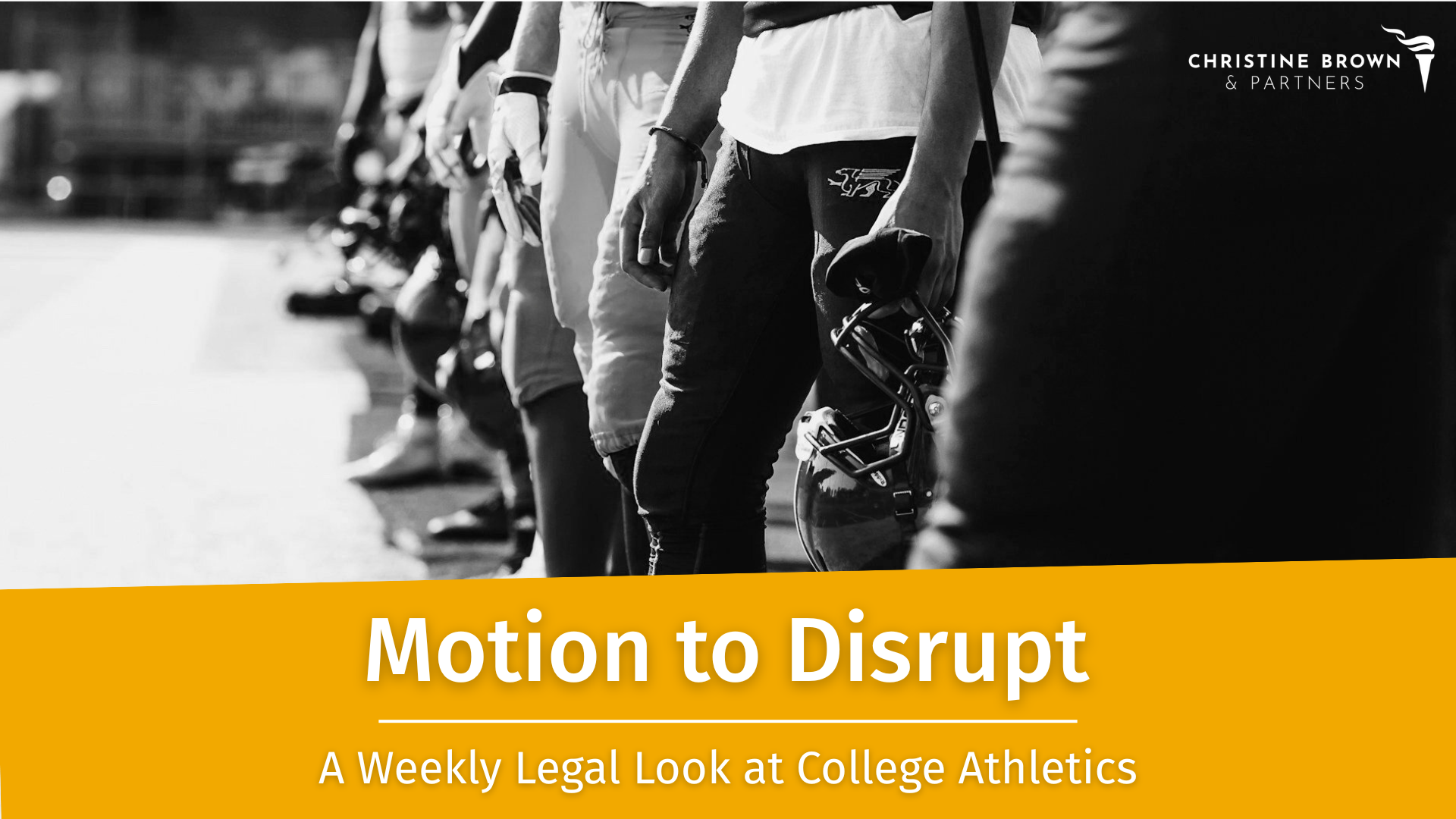Motion to Disrupt Vol. 4
Collective Bargaining Isn’t If — It’s When
OPENING STATEMENTS
This week marked a major milestone in college athletics, perhaps the biggest in its history. With the House v. NCAA settlement now in effect, schools on Tuesday started sharing revenue with athletes. However monumental, it’s still a patchwork for an antiquated system. The foundational change, I’m more convinced than ever, is still to come. Whether that’s a year or two or five.
The real shift is collective bargaining, or a structure that resembles it.
Tennessee Athletic Director Danny White is one of the few in leadership saying it out loud, detailing to Yahoo Sports what he calls a “national employment organization” that partners with a players association.
“Collective bargaining and employment status shouldn't be seen as negative terms,” he told Yahoo Sports. “We can go through another three or five or 10 years of a difficult environment. Or we can accept the reality and fix it right now.”
The implications of this go well beyond compensation, cutting straight to the nature of the student-institution relationship. The legal implications of this, or any similar framework, are sweeping. Here are some initial thoughts as the wave of NCAA disruption continues:
Legal Foundation
Athletes would need recognition as “employees” under the National Labor Relations Act (NLRA), gaining rights like unionization and minimum wage. Active litigation (Johnson v. NCAA) and NLRB actions are testing this, but a final ruling will not come expeditiously.
How Bargaining Could Work
Jurisdictional Divide. The NLRA covers private schools; public universities fall under state labor laws, creating a fractured system. Bargaining could occur at the school, conference, or national level, with each having its own complications.
Unionization Precedents. Dartmouth men’s basketball has already been testing union rights, but defining the “employer” and bargaining unit remains a legal hurdle.
Key Legal Effects
Antitrust Shield. Collective bargaining agreements are exempt from antitrust laws, allowing negotiated pay caps or revenue sharing without legal risk.
Expanded Rights. Athletes could bargain for:
Direct compensation
Medical coverage and safety protocols
Revenue shares from media and sponsorships
Schools, especially smaller ones, may struggle to meet these new costs.
Title IX Compliance. Any pay system must also comply with gender equity rules, likely triggering new legal challenges.
Some of the bigger picture takeaways?
Litigation Risk. Expect more lawsuits over employment status, wage laws, and labor rights as systems evolve.
Impact on Non-Revenue Sports. Rising costs may lead to program cuts - some of which we’re already seeing in this new model - shrinking opportunities outside football and basketball.
A version of collective bargaining now seems less a question of if, than when. It would give athletes the legal rights and negotiating power they’ve never had. But it also requires a full rebuild of college sports’ legal foundation.
EXHIBIT A
Whether or not their approach is successful is a separate question, but it certainly seems like the University of North Carolina is taking a different view in gearing up for this new era. There was the celebrated hiring of Bill Belichick to lead a football program that increasingly mirrors the pros. Now, it's bringing in NASCAR executive Steve Newmark, RFK Racing president with deep experience in sponsorships, marketing, and negotiations, as Executive Associate AD. With Bubba Cunningham shifting roles, these moves signal a sharp pivot toward aligning the department with the realities of revenue sharing, NIL, and commercial strategy. As Brian Kennedy of Duke Football Talk Section 17 Podcast tweeted, “The quicker AD’s around the country acknowledge that today’s climate towards college sports is business-based, the better they will adapt and succeed. You would not have seen a move like this 5 years ago.”
EXHIBIT B
According to Yahoo, 319 NCAA Division I schools – 82% – opted into the House settlement by Monday’s deadline for the 2025-26 academic year. So what about the schools that didn’t opt in, which include all of the Ivy League? By sitting out, they can’t share revenue directly with athletes, but they also avoid the settlement’s roster size restrictions. Still, their athletes must report third-party NIL deals through the NIL Go clearinghouse. Schools that held off can reconsider next year; the opt-in deadline for 2026-27 is in March.
ON THE DOCKET
Looking long-term again this week. And it’s a big one. Just days into this new world, and one of the fundamental points was already in question. As USA Today reported, plaintiffs’ lawyers are questioning the underlying revenue used to establish the $20.5 million cap. Under the settlement, per-school benefits are capped at 22% of revenues from Power 5 schools during the ‘23-’24 fiscal years. They have the right to audit the data each year, and it sounds as if they’re willing to accept the provided figures. But, according to one of the leaders, Steve Berman … “But if that turns out to be different, there will have to be some adjustment. … We have questions about the information we’ve gotten.”
FOOTNOTES
$2.75 billion.
The estimated NIL payout projections for 2025, according to Opendorse’s annual report card

